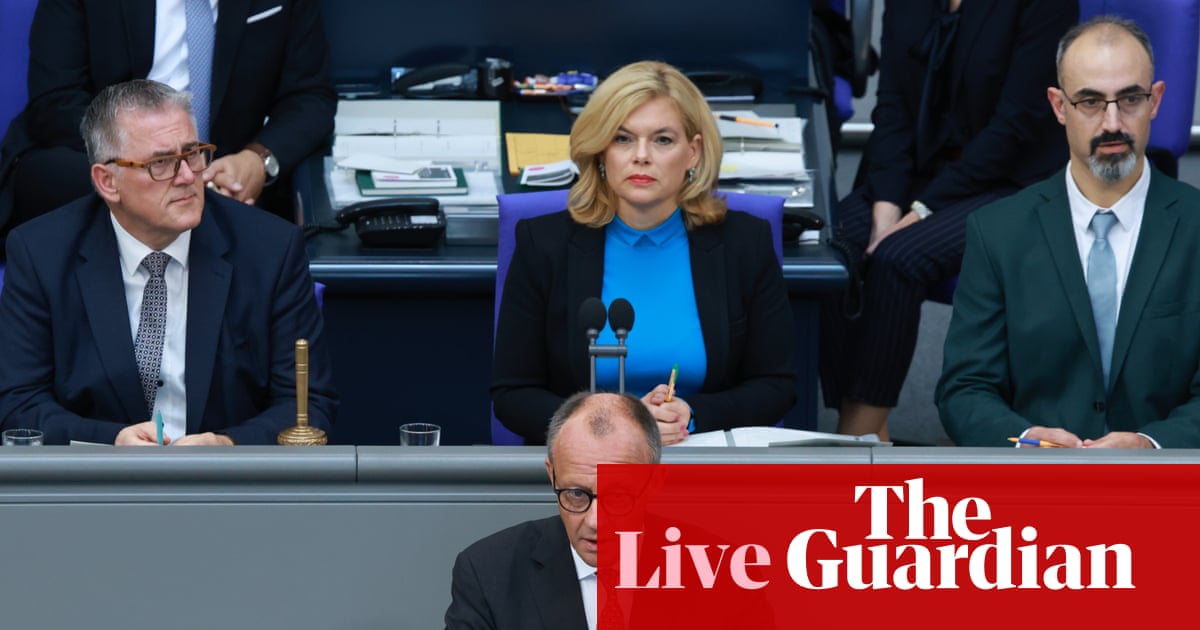On 11 June, the government will unveil its long-awaited spending review, laying out how it wants to spend more than £600bn annually on public services over the next few years. That’s about a fifth of the entire British economy. The choices made over funding for the NHS, schools, courts, prisons and much more besides will shape life in the UK in the coming years. It’s no exaggeration to say this could be the defining domestic policy moment of this parliament.
Rachel Reeves’s first budget included a big tax rise and a two-year increase in borrowing to boost spending on public services. For future years, the chancellor has repeatedly reaffirmed her “ironclad” commitment to borrow only to invest. Such is the dismal state of the public finances that even with tax revenues that are high by historical standards, spending growth in the coming years will be relatively modest. Overall day-to-day departmental spending is set to rise by an average of just 1.2% above inflation over the next three years. This will make the spending review tough. Allocating spending across departments will inevitably mean picking winners and losers.
The single most consequential decision will be how much funding to allocate to the NHS. The NHS budget is big – it accounts for 40% of day-to-day spending on public services. That’s comfortably more than is spent on schools, universities, the police, prisons and defence combined.
For decades, the savings from declining defence spending were effectively ploughed into the health service. Those “peace dividend” days are gone. The government has already committed to increase defence spending to 2.5% of national income. It’s unusual for health and defence spending to grow at once – and unheard of for it to happen in a period of low growth and high interest rates. If the government also chooses to prioritise the NHS budget alongside defence, other departments’ budgets will see cuts.
Consider this scenario: if the government increases defence spending as promised, and opts for a 3.4% annual increase in NHS funding – below the long-term average and far short of the 6% growth seen under Labour in the 2000s – it would probably be enough to hire the staff the government’s workforce plan says the NHS needs and deliver improvements to NHS performance before the next election. But the wider implications would be stark: it would require cuts of 1% a year to the budget for all other departments.
The government could, of course, allocate less to the NHS. That could jeopardise the promise to substantially reduce hospital waiting times by the next election and to build an “NHS fit for the future”. But it would free up resources for its other missions to “break down the barriers to opportunity”, “make Britain a clean energy superpower”, deliver “safer streets” and “kickstart economic growth”. When funding is tight, more money for a shiny new initiative inevitably means less money for something else.
The prime minister noted that achieving the five missions of his government will demand “relentless focus and prioritisation”. We’ll soon find out, when push comes to shove, what this government’s priorities are.
Some departments, and some ministers, are likely to be disappointed. Once the spending review settlements are revealed, the deputy prime minister, Angela Rayner, may not be the only Labour MP calling for higher taxes to reduce pressure on spending. By autumn, however, disgruntled colleagues could be the least of Reeves’s concerns.
At the spring statement in March, the Office for Budget Responsibility (OBR) was significantly more optimistic about growth prospects than most other forecasters. Since then, global developments have been bad news for the UK’s economic outlook.
If the OBR downgrades its growth forecast, that could easily wipe out the chancellor’s limited wiggle room against her fiscal rules – perhaps several times over. Last November, Reeves was adamant that she would not be “coming back with more borrowing or more taxes”. But unless she gets lucky, she will have to come back with something to avoid a breach of her rules for borrowing.
Assuming her fiscal rules remain “ironclad”, Reeves will have three options. She could cut departmental spending, just a few months after settling multiyear spending plans with her cabinet colleagues. She could make further cuts to the social security budget, when there is pressure – not least from some MPs – to do the exact opposite. Or she could raise taxes again to pay for the spending that has already been pledged. It’s clear why speculation about potential tax rises will continue.
But we should not let speculation about the budget distract us from scrutinising the spending review itself. The government’s decisions on how to allocate more than £600bn of spending a year for several years will be of great consequence, whatever happens in the autumn.
And, since speculation about the budget will inevitably continue, the discussion should shift from simply how taxes could be tweaked to raise more revenue to how they could be reformed to be less damaging to growth. Delivering higher growth deserves its place as the government’s number one mission and should be a central focus across all areas of policy. Reeves is yet to show any interest in tax reform. She is missing an opportunity. With challenging years ahead, we need a government that seizes every opportunity to drive up economic growth. Achieving that mission would make everything else easier.
-
Helen Miller is the incoming director of the Institute for Fiscal Studies

 3 months ago
146
3 months ago
146

















































